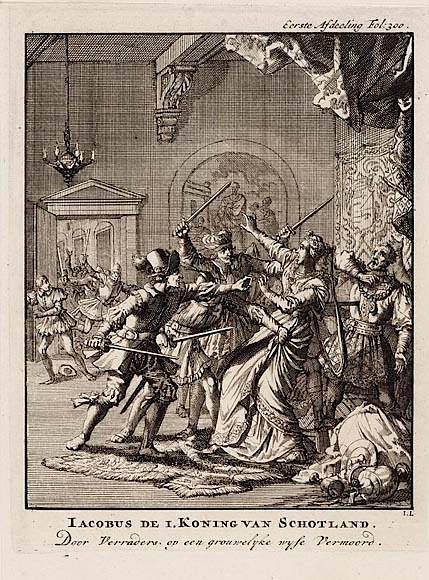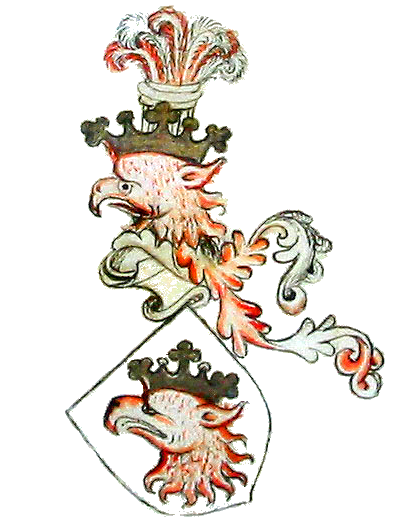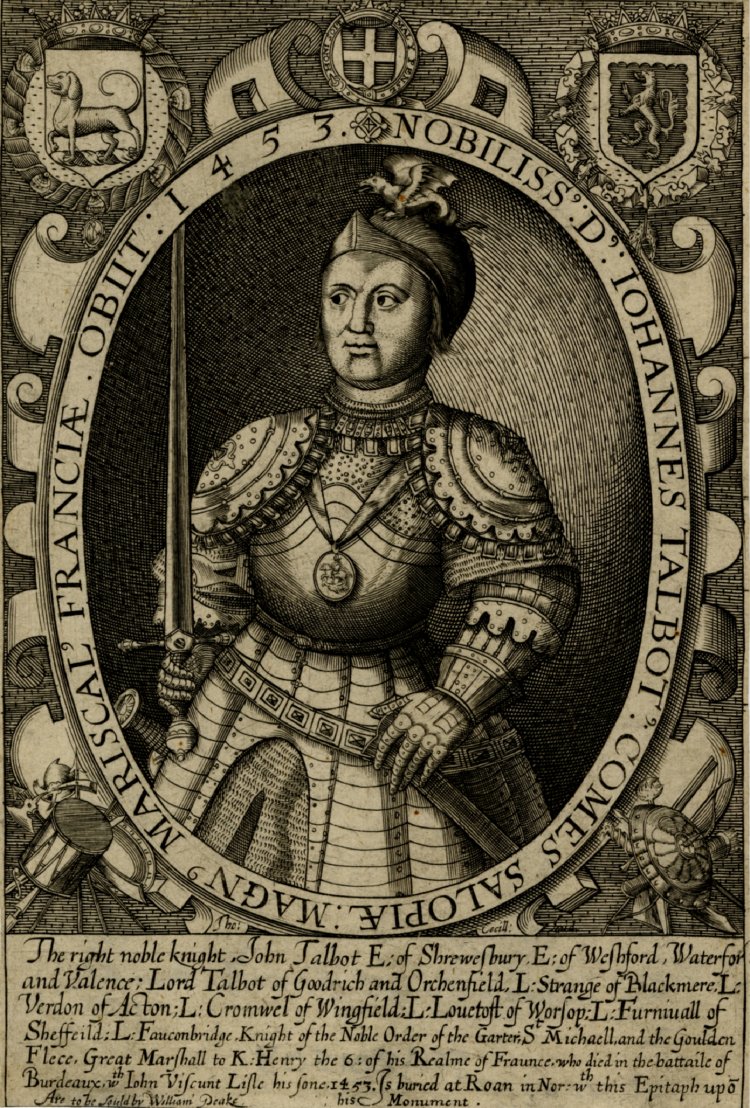|
1437
Year 1437 ( MCDXXXVII) was a common year starting on Tuesday of the Julian calendar. Events January–March * January 15– The Compacts of Basel are ratified by the Council of Basel in Switzerland, as the Roman Catholic Church ends its campaign against the Hussites. Among other things, the Church authorizes Hussite priests to administer sacramental wine to their congregations as part of the Communion during the Eucharist before Easter without declaring the same to be heresy, but stops short of allowing the Communion wafer. * January 17 – Battle of Hällaskogen, Sweden: Rebels from the cities of Arboga, Köping, and Örebro, led by Erik Puke, defeat the troops sent by King Karl VIII. Puke is captured a few weeks later, and beheaded on February 13. * January 21– The English Parliament, summoned in the name of King Henry VI on October 29, assembles at Westminster. The House of Commons elects the ailing John Tyrrell as its Speaker. * February 13&nd ... [...More Info...] [...Related Items...] OR: [Wikipedia] [Google] [Baidu] |
James I Of Scotland
James I (late July 1394 – 21 February 1437) was List of Scottish monarchs, King of Scots from 1406 until his assassination in 1437. The youngest of three sons, he was born in Dunfermline Abbey to King Robert III of Scotland, Robert III and Annabella Drummond. His eldest brother David, Duke of Rothesay, died under suspicious circumstances while detained by his uncle, Robert, Duke of Albany. James's other brother, Robert, died young. Concerns for James's safety deepened in the winter of 1405–1406 prompting plans to send him to France. In February 1406, James took refuge in the castle of the Bass Rock in the Firth of Forth after his escort was attacked by supporters of Archibald, 4th Earl of Douglas. He remained there until mid-March when he boarded a vessel bound for France. On 22 March, an English vessel captured the ship and delivered James to Henry IV of England. The ailing Robert III died on 4 April and the 11-year-old James, now the uncrowned King of Scotland, would rema ... [...More Info...] [...Related Items...] OR: [Wikipedia] [Google] [Baidu] |
John Tyrrell (died 1437)
Sir John Tyrrell (c.1382 – 2 April 1437), of Heron in the Essex parish of East Horndon, was an English landowner, lawyer, administrator, and politician who was chosen three times as List of Speakers of the House of Commons of England, Speaker of the House of Commons. Origins John Tyrrell was the eldest son of Walter Tyrrell of Avon Tyrrell, Hampshire, by his wife Eleanor Flambard (died 29 March 1422), daughter and heiress of Edmund Flambard of Shepreth, Cambridgeshire, by his wife Elizabeth FitzRalph, daughter of Richard FitzRalph. After the death of Walter Tyrrell, Eleanor remarried to Sir Nicholas Haute (1357–c. 1415), Member of parliament, MP, of Wadden Hall in Waltham, Kent. John was the grandson and heir of Sir Thomas Tyrrell (died 1382) who was buried at Downham, Essex, in 1382, and was survived by his wife, Alice. Brothers Tyrrell had the following four brothers: *Edward Tyrrell (died 17 December 1442), Esquire, of Downham, who married Anne Pashley, widow of John B ... [...More Info...] [...Related Items...] OR: [Wikipedia] [Google] [Baidu] |
Council Of Florence
The Council of Florence is the seventeenth ecumenical council recognized by the Catholic Church, held between 1431 and 1445. It was convened in territories under the Holy Roman Empire. Italy became a venue of a Catholic ecumenical council after a gap of about 2 centuries (the last ecumenical council to be held in Italy was the 4th Council of the Lateran in Rome's Lateran Palace). It was convoked in Basel as the Council of Basel by Pope Martin V shortly before his death in February 1431 and took place in the context of the Hussite Wars in Bohemia and the rise of the Ottoman Empire. At stake was the greater conflict between the conciliar movement and the principle of papal supremacy. The Council entered a second phase after Emperor Sigismund's death in 1437. Pope Eugene IV translated the Council to Ferrara on 8 January 1438, where it became the Council of Ferrara and succeeded in drawing some of the Byzantine ambassadors who were in attendance at Basel to Italy. Some Co ... [...More Info...] [...Related Items...] OR: [Wikipedia] [Google] [Baidu] |
Malmö Stads Vapenbrev, 1437
Malmö is the List of urban areas in Sweden by population, third-largest city in Sweden, after Stockholm and Gothenburg, and the List of urban areas in the Nordic countries, sixth-largest city in Nordic countries, the Nordic region. Located on the Øresund, Öresund Øresund, strait on the southwestern coast of Sweden, it is the largest city in Scania, with a municipal population of 365,644 in 2024, and is the Governors of Skåne County, gubernatorial seat of Skåne County. Malmö received its city privileges in 1353, and today Metropolitan Malmö, Malmö's metropolitan region is home to over 700,000 people. Malmö is the site of Sweden's only Fixed link, fixed direct link to continental Europe, the Öresund Bridge, completed in 2000. The bridge connects Sweden to Denmark, and carries both road and rail traffic. The Öresund Region, which includes Malmö and Copenhagen, is home to four million people. The city was one of the earliest and most-Industrial Revolution, industri ... [...More Info...] [...Related Items...] OR: [Wikipedia] [Google] [Baidu] |
Köping, Sweden
Köping is a locality and the seat of Köping Municipality in Västmanland County, Sweden. It had 17,743 inhabitants in 2010. It is known for the television series '' I en annan del av Köping''. Etymology ''Köping'' means merchant place. It was mentioned for the first time in the 13th century. It was probably given such a name as it did not yet have a charter. The central location of Köping deems it appropriate for merchancy for people from different parts of the country. History People have lived on the site for a long time, which is evident not least from the Viking-age boat burial ground at Norsa. An old trading post has been located near Köping. It is first mentioned in a document from the year 1257, when a bishops' meeting was held on the site. Köping, with central and southern Sweden was сhristianised in the 11th century. A church built around 1300, the Köping Church, still remains from the early days. Köping has been known as a city since 1349 when its city ... [...More Info...] [...Related Items...] OR: [Wikipedia] [Google] [Baidu] |
Heresy
Heresy is any belief or theory that is strongly at variance with established beliefs or customs, particularly the accepted beliefs or religious law of a religious organization. A heretic is a proponent of heresy. Heresy in Heresy in Christianity, Christianity, Heresy in Judaism, Judaism, and Bid‘ah, Islam has at times been met with censure ranging from excommunication to the death penalty. Heresy is distinct from apostasy, which is the explicit renunciation of one's religion, principles or cause; and from blasphemy, which is an impious utterance or action concerning God or sacred things. Heresiology is the study of heresy. Etymology Derived from Ancient Greek ''haíresis'' (), the English ''heresy'' originally meant "choice" or "thing chosen". However, it came to mean the "party, or school, of a man's choice", and also referred to that process whereby a young person would examine various philosophies to determine how to live. The word ''heresy'' is usually used within a C ... [...More Info...] [...Related Items...] OR: [Wikipedia] [Google] [Baidu] |
John Talbot, 1st Earl Of Shrewsbury
John Talbot, 1st Earl of Shrewsbury, 1st Earl of Waterford, 7th Baron Talbot, KG (17 July 1453), known as "Old Talbot" and "Terror of the French" was an English nobleman and a noted military commander during the Hundred Years' War. He was the most renowned in England and most feared in France of the English captains in the last stages of the conflict. Known as a tough, cruel, and quarrelsome man, Talbot distinguished himself militarily in a time of decline for the English. Called "the English Achilles", he is lavishly praised in the plays of Shakespeare. The manner of his death, leading an ill-advised charge against field artillery, has come to symbolize the passing of the age of chivalry. He also held the subsidiary titles of 10th Baron Strange of Blackmere and 6th Baron Furnivall. Origins He was descended from Richard Talbot, the son of William "Le Sire" Talbot, whose estate (wife and infant son Hugh) was a tenant in 1086 of Walter Giffard at Woburn and Battlesden in Be ... [...More Info...] [...Related Items...] OR: [Wikipedia] [Google] [Baidu] |
Hussites
upright=1.2, Battle between Hussites (left) and Crusades#Campaigns against heretics and schismatics, Catholic crusaders in the 15th century upright=1.2, The Lands of the Bohemian Crown during the Hussite Wars. The movement began during the Prague.html" ;"title="Renaissance in Prague">Renaissance in Prague and quickly spread south and then through the rest of the Kingdom of Bohemia. Eventually, it expanded into the remaining domains of the Bohemian Crown as well. The Hussites (Czech: ''Husité'' or ''Kališníci'', "Chalice People"; Latin: ''Hussitae'') were a Czech Proto-Protestantism, proto-Protestant Christian movement influenced by both the Byzantine Rite and John Wycliffe that followed the teachings of reformer Jan Hus (fl. 1401–1415), a part of the Bohemian Reformation. The Czech lands had originally been Christianized by Byzantine Greek missionaries Saints Cyril and Methodius, who introduced the Byzantine Rite in the Old Church Slavonic liturgical language and the B ... [...More Info...] [...Related Items...] OR: [Wikipedia] [Google] [Baidu] |
Compacts Of Basel
The Compacts of Basel, also known as Basel Compacts or ''Compactata'', was an agreement between the Council of Basel and the moderate Hussites (or Utraquists), which was ratified by the Estates of Bohemia and Moravia in Jihlava on 5 July 1436. The agreement authorized Hussite priests to administer the sacramental wine to laymen during the Eucharist. The Council of Basel ratified the document on 15 January 1437, but it acknowledged that the communion under both kinds Communion under both kinds in Roman Catholicism is the reception under both "species" (i.e., both the consecrated bread and wine) of the Eucharist. Denominations of Christianity that hold to a doctrine of Communion under both kinds may believe ... was not heretical only on 23 December. References Sources * * * * Hussite history 1436 in Europe {{Christianity-hist-stub ... [...More Info...] [...Related Items...] OR: [Wikipedia] [Google] [Baidu] |
February 21
Events Pre-1600 * 452 or 453 – Severianus, Bishop of Scythopolis, is martyred in Palestine. * 1245 – Thomas, the first known Bishop of Finland, is granted resignation after confessing to torture and forgery. * 1440 – The Prussian Confederation is formed. 1601–1900 * 1613 – Mikhail I is unanimously elected Tsar by a national assembly, beginning the Romanov dynasty of Imperial Russia. * 1797 – A force of 1,400 French soldiers invaded Britain at Fishguard in support of the Society of United Irishmen. They were defeated by 500 British reservists. * 1804 – The first self-propelling steam locomotive makes its outing at the Pen-y-Darren Ironworks in Wales. * 1808 – Without a previous declaration of war, Russian troops cross the border to Sweden at Abborfors in eastern Finland, thus beginning the Finnish War, in which Sweden will lose the eastern half of the country (i.e. Finland) to Russia. * 1828 – Initial issue of t ... [...More Info...] [...Related Items...] OR: [Wikipedia] [Google] [Baidu] |
Common Year Starting On Tuesday
A common year starting on Tuesday is any non-leap year (i.e. a year with 365 days) that begins on Tuesday, 1 January, and ends on Tuesday, 31 December. Its dominical letter hence is F. The most recent year of such kind was 2019, and the next one will be 2030, or, likewise, 2025 and 2031 in the obsolete Julian calendar, see #Applicable years, below for more. Any common year that starts on Tuesday has two Friday the 13ths: those two in this common year September 13, occur in September and December 13, December. Leap year starting on Monday, Leap years starting on Monday share this characteristic. From July of the year preceding this year until September in this type of year is the longest period (14 months) that occurs without a Friday the 13th. leap year starting on Saturday, Leap years starting on Saturday share this characteristic, from August of the common year starting on Friday, common year that precedes it to October in that type of year. This year has three months (June, Sept ... [...More Info...] [...Related Items...] OR: [Wikipedia] [Google] [Baidu] |
Roman Numerals
Roman numerals are a numeral system that originated in ancient Rome and remained the usual way of writing numbers throughout Europe well into the Late Middle Ages. Numbers are written with combinations of letters from the Latin alphabet, each with a fixed integer value. The modern style uses only these seven: The use of Roman numerals continued long after the Fall of the Western Roman Empire, decline of the Roman Empire. From the 14th century on, Roman numerals began to be replaced by Arabic numerals; however, this process was gradual, and the use of Roman numerals persisted in various places, including on clock face, clock faces. For instance, on the clock of Big Ben (designed in 1852), the hours from 1 to 12 are written as: The notations and can be read as "one less than five" (4) and "one less than ten" (9), although there is a tradition favouring the representation of "4" as "" on Roman numeral clocks. Other common uses include year numbers on monuments and buildin ... [...More Info...] [...Related Items...] OR: [Wikipedia] [Google] [Baidu] |






